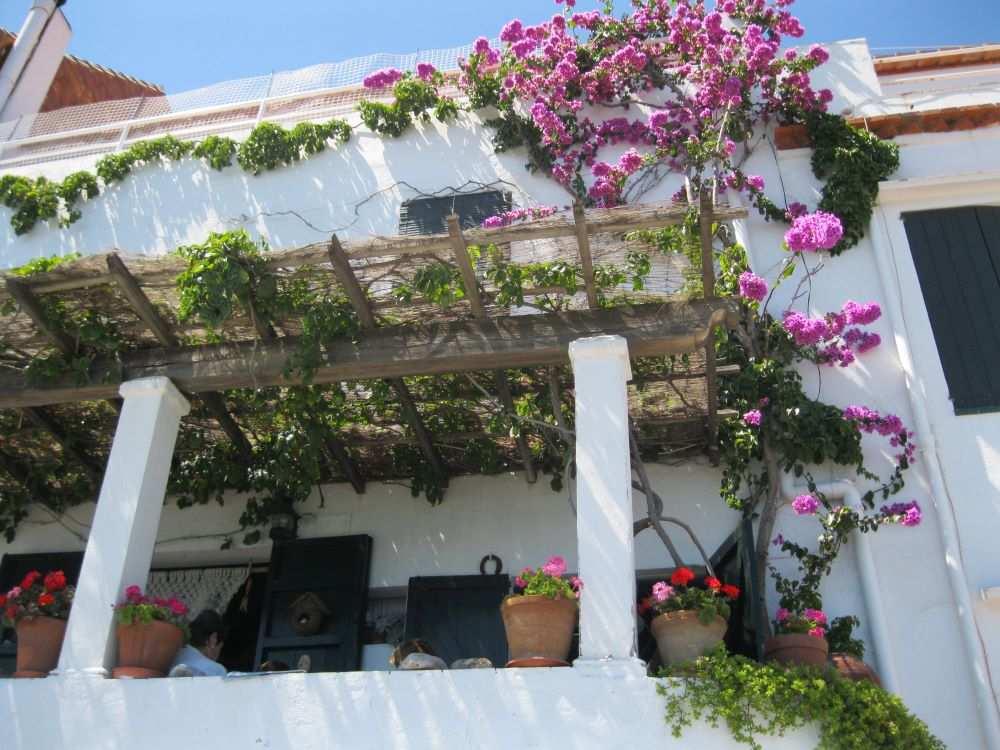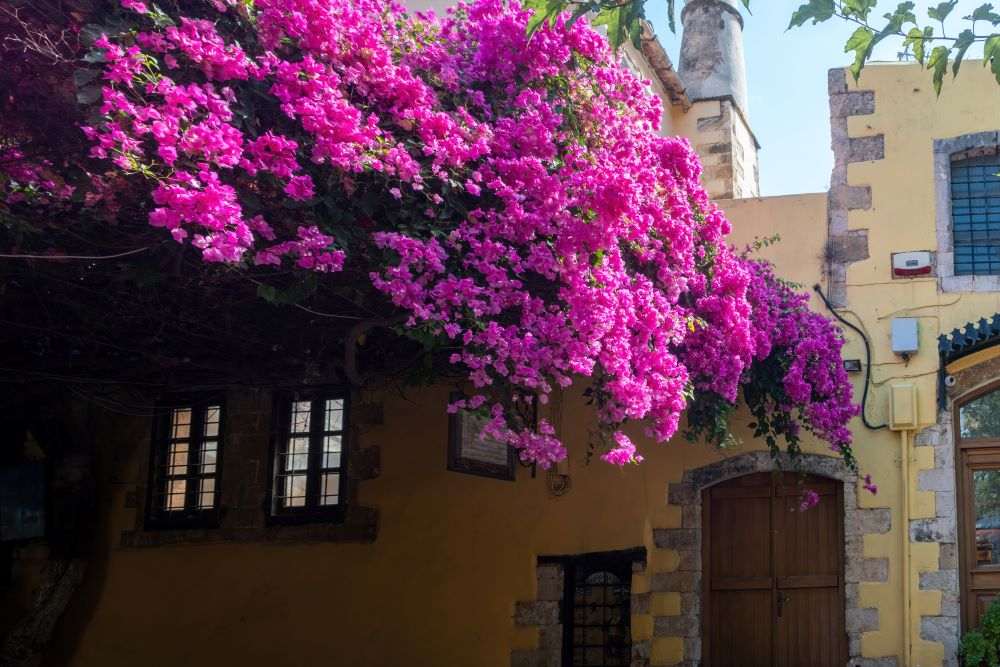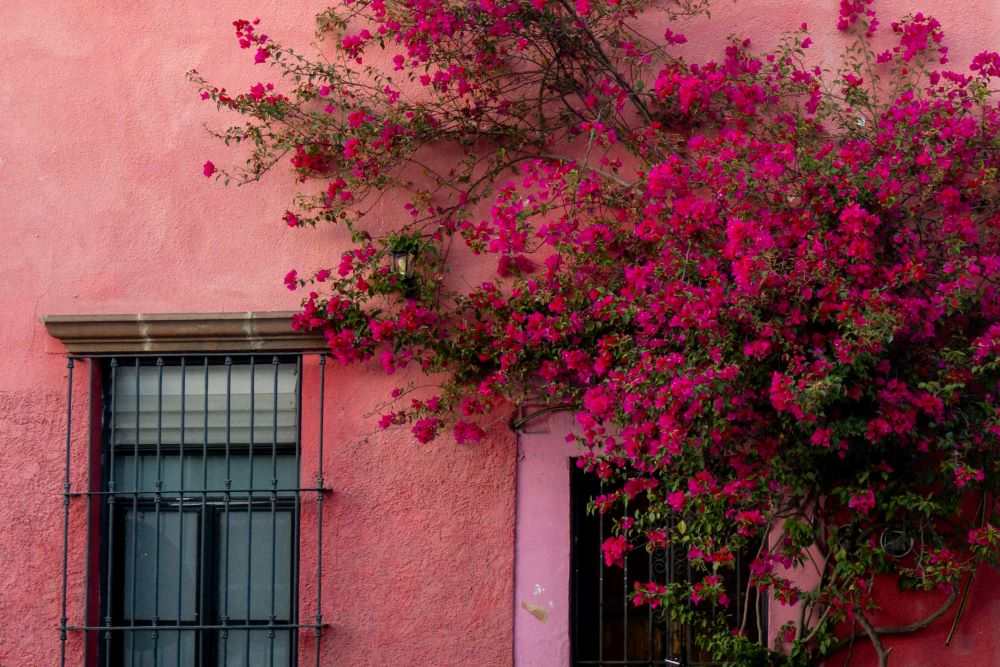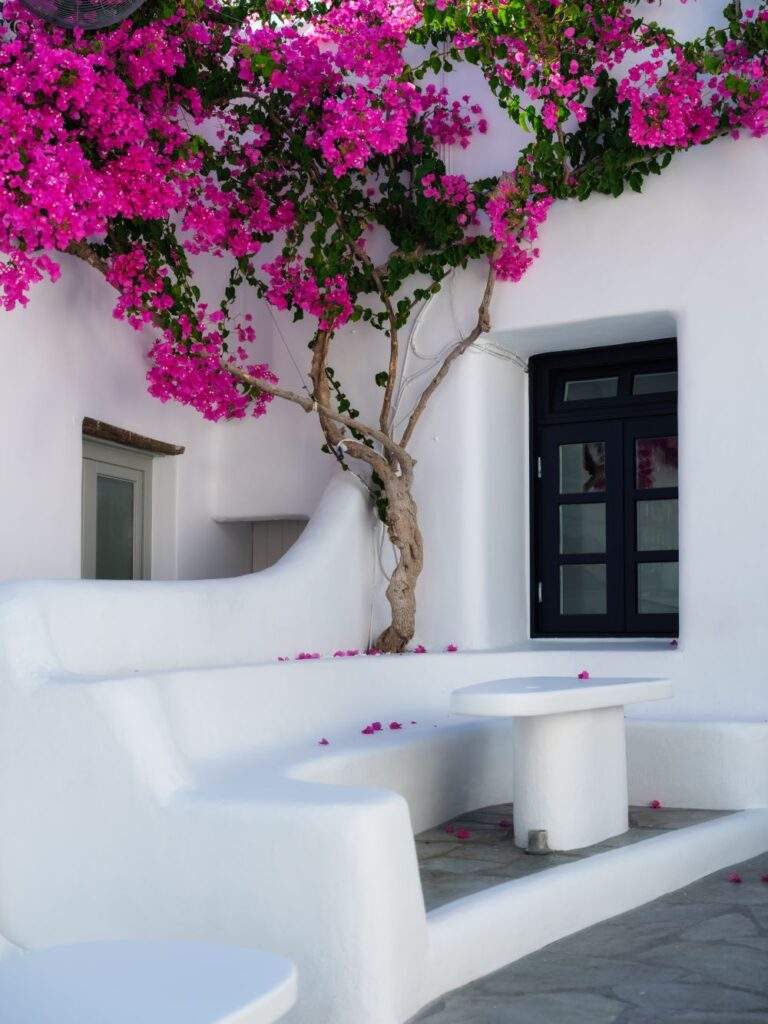People who live in tropical or subtropical regions can’t help but feel fascinated by one lovely plant with bright, vibrant blooms: bougainvillea. Gardeners value it not only for its beauty but also for its hardiness, minimal water needs, and ease of growing in front of the home. Moreover, the plant makes an ideal shadow, and creates a pop of color in front of the door or in your garden. But does, like most wonderful things, bougainvillea has its “dark” side? As, when it grows climbing on fences and walls, some people are afraid that it can destroy these structures. We’ll focus on the issue today, examining does bougainvillea damage walls, and exploring the potential pros and cons of this showy plant.
Do Bougainvilleas Have Invasive Roots?

As we mentioned above, one concern that people have about bougainvillea is that it may develop invasive roots, which can ruin fences and other structures. But what do the specialists think: does bougainvillea damage walls, railings, or other places where it climbs? While it’s true that some plants have destructive roots, most people don’t consider bougainvillea one of them. This plant’s roots are generally shallow and do not extend deeply into the soil. They also tend to grow close to the surface, which makes them easier to control. Moreover, bougainvillea is not a fast-growing plant, subsequently its roots do not expand rapidly.
Does Bougainvillea Damage Walls or not?

Another issue for the people, which prevents them from growing this plant, is that bougainvillea’s roots may make holes and cracks on walls. But do bougainvillea roots damage walls, really? While it is possible for the roots of particular plants to cause cracks on facades, it’s hard to say that about this plant. If bougainvillea is growing near a wall, its roots may penetrate through its surface and make small cracks or openings there. However, they are not strong enough to cause significant damage to the wall. Therefore, in most cases, you can easily repair the scratches caused by the roots. However, if the wall already shows signs of damage, bougainvillea roots may make the problem worse. In these cases, it is best to address the underlying problem before planting any vegetation near the wall.
Does Bougainvillea Damage Walls Built With Stucco?

Stucco is a popular material for walls and other structures in warm and dry climate zones. And when wanting to grow bougainvillea, some people worry that they may cause appearing cracks and holes to stucco walls surfaces. What think for this issue: “does bougainvillea damage stucco walls” the plant specialists? While it is possible for the plant to cause some injury to stucco, this is not a common occurrence. If the bougainvillea is growing against this kind of wall, its roots may penetrate through the surface, making small cracks or tiny holes in it. But this changes on the surface are very little.
Though, there is another issue with the bougainvillea growing on walls. The plant can produce a sticky sap, which may adhere to stucco surfaces and stay there. And this can be difficult to remove. However, with proper care and maintenance, it is possible to minimize its impact of the problem.
What are the Pros and Cons of Bougainvillea?

From the above said, it’s evident that the plant can cause some little problems. But whether the advantages of bougainvillea can compensate for its disadvantages? For this purpose, let’s take a look at the pros and cons of this popular plant.
What are the Cons?

Its thorns: Bougainvillea has sharp thorns that can make the pruning a little bit difficult. Additionally, this can be somewhat dangerous when you have little children playing outside.
It can create a mess: The plant produces debris from the fallen leaves, spent blooms and twigs.
A little bit invasive: Bougainvillea can spread quickly and require regular pruning to keep it under control.
Possible damage: This plant won’t cause significant damage to walls or other structures, but it is possible to exacerbate existing issues.
What are the Pros?

People appreciate bougainvillea for its colorful, showy blooms, which add a splash of color to the landscape.
Hardiness: Bougainvillea is a hardy plant that can tolerate a range of growing conditions. The plant thrives well in heat, bears drought climate, and can grow on poor soil.
Low maintenance: Bougainvillea requires relatively little maintenance once established, making it a good choice for those who want a low-effort plant.
You can grow bougainvillea in a variety of settings, including as a ground cover, a hedge, or a climbing vine.
While some people have concerns about its impact on walls and other structures, these issues are generally minor and proper care and maintenance can prevent them.
Image credits Envato Elements
Frequently Asked Questions
Do Bougainvilleas Have Invasive Roots?
Most specialists do not consider bougainvillea to have invasive roots. The plant’s roots are generally shallow, close to the surface, and not fast-growing. This makes them easier to control and less likely to cause damage to structures.
Does Bougainvillea Damage Walls or not?
While bougainvillea roots may penetrate wall surfaces and create small cracks, they are not strong enough to cause significant damage. In most cases, any scratches caused by the roots can be easily repaired. However, existing wall damage should be addressed before planting bougainvillea nearby.
Does Bougainvillea Damage Walls Built With Stucco?
While bougainvillea roots may cause minor cracks or holes in stucco walls, significant damage is rare. The plant’s sticky sap can adhere to stucco surfaces, but proper care and maintenance can minimize this impact.
What are the Pros and Cons of Bougainvillea?
What are the Cons?
Its thorns: Bougainvillea has sharp thorns that can make pruning challenging and pose a risk, especially around children.
It can create a mess: The plant produces debris from fallen leaves, spent blooms, and twigs.
A little bit invasive: Bougainvillea can spread quickly and may require regular pruning to control its growth.
Possible damage: While not significant, bougainvillea can exacerbate existing issues with walls or structures.
What are the Pros?
People appreciate bougainvillea for its colorful blooms that add vibrancy to the landscape.
Hardiness: Bougainvillea is hardy, tolerating various conditions like heat, drought, and poor soil.
Low maintenance: Once established, bougainvillea requires little upkeep, making it a low-effort plant choice.
Bougainvillea can be grown in different settings, including as a ground cover, hedge, or climbing vine.

